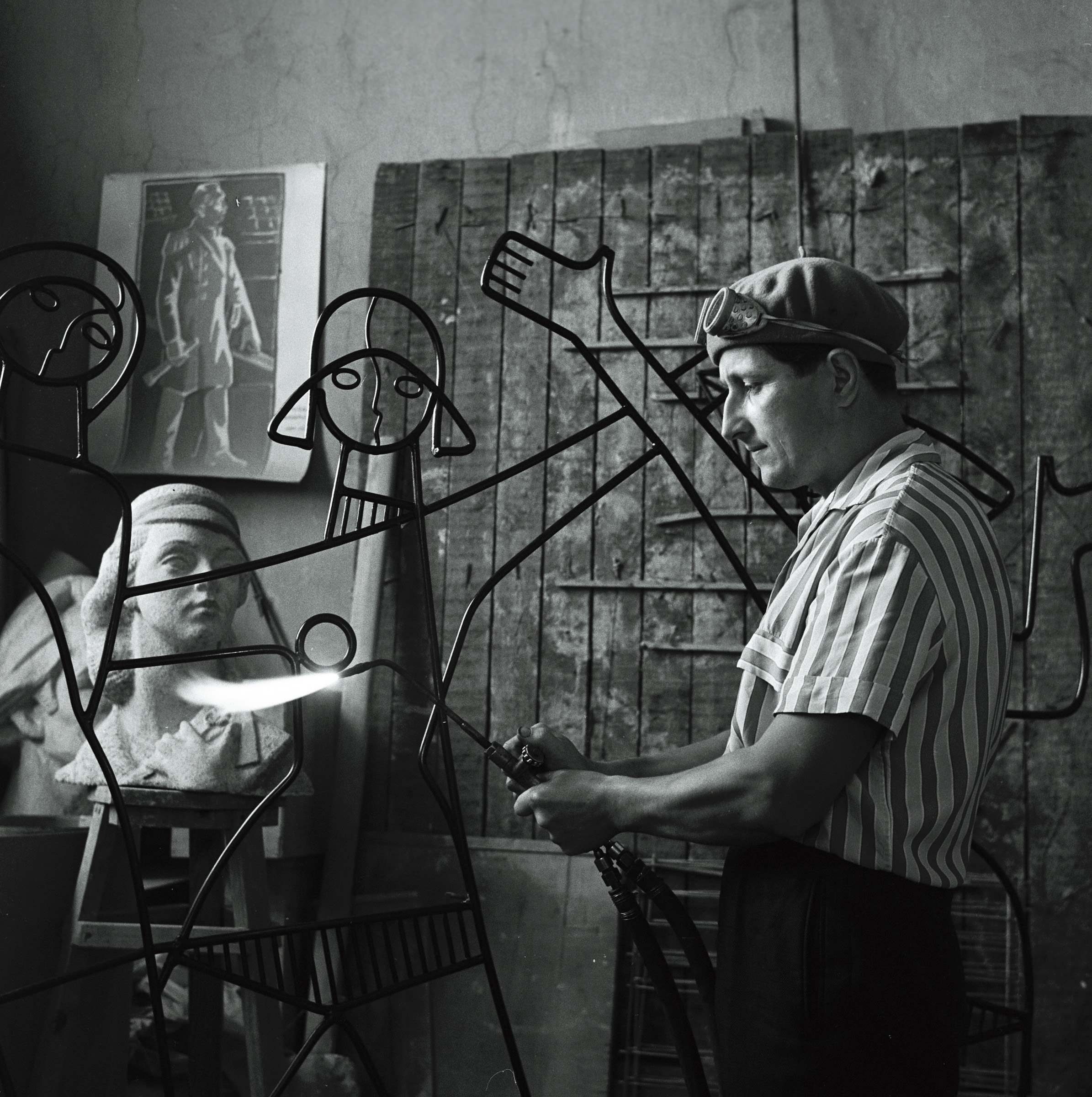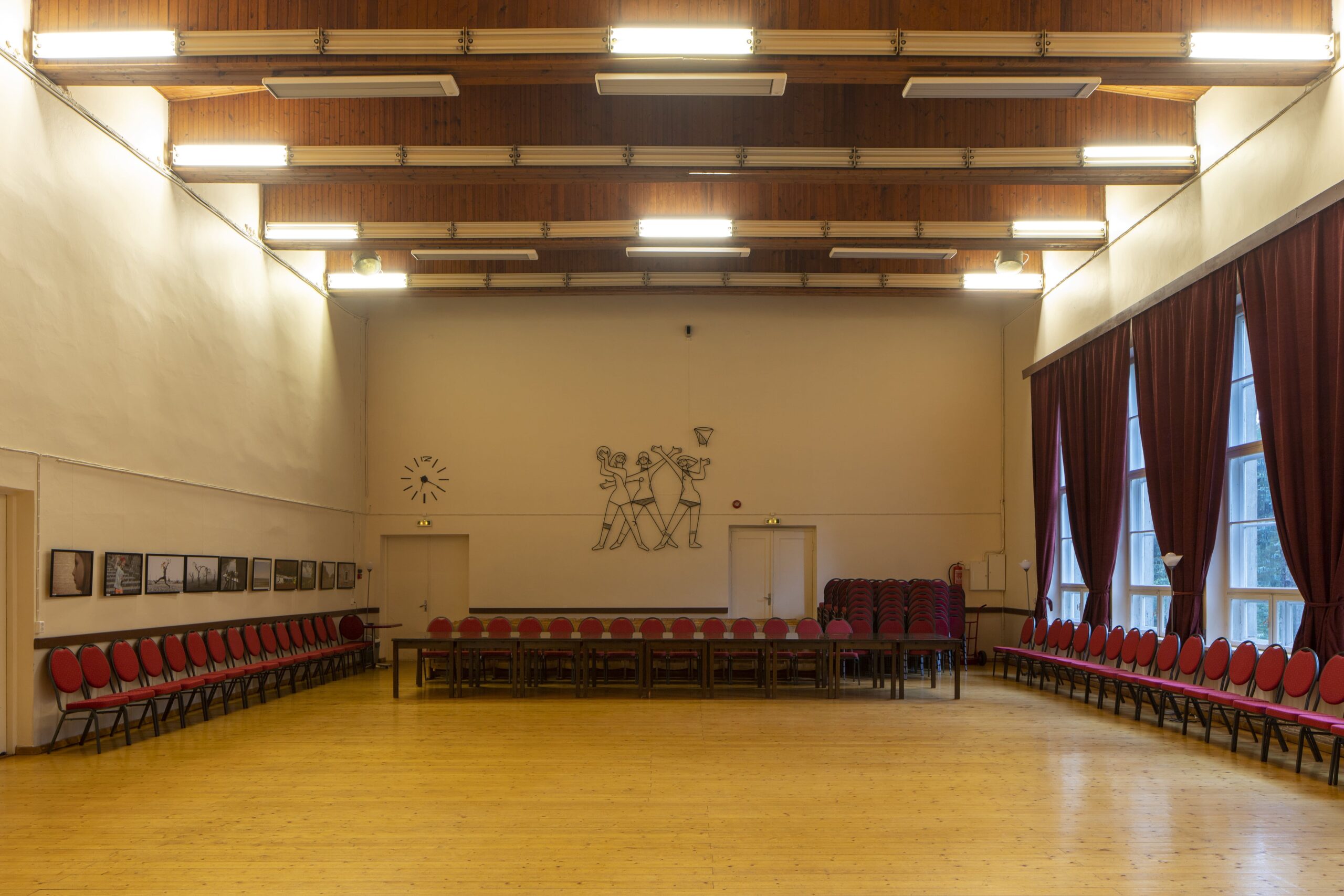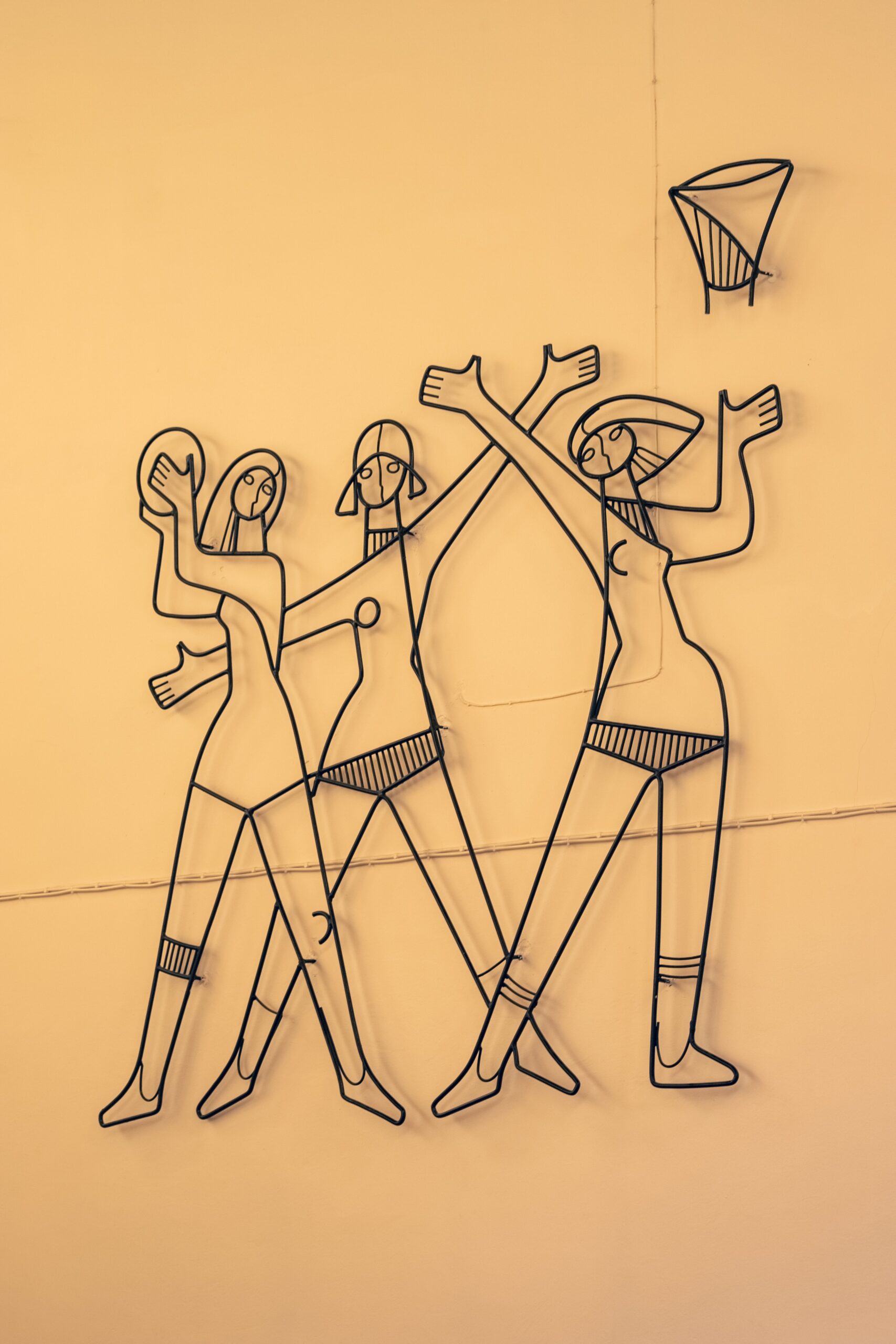Metal Female Figures in Treiman Cultural Centre
Year of completion: 1965
Address: Pärnu County, Häädemeeste Parish, Treimani Village
Author Aulin Rimm
Bent metal rods, welding
Not a cultural monument
After the arrival of Soviet powers, numerous small collective farms aka kolkhozes were formed in Estonia in addition to the state farms (sovkhoz). The collective farms were often vigorously titled with conceptual, even bordering on absurd names. Kindel tee (“Steady Path”) in Sürgavere, Viljandi; collective farm Partisan Lembitu in Eoste, Põlva County; and Avangard (“Avant-garde”) in Äksi, Tartu County are only a few examples of the cheery exclamations of the new regime. Fishing collective farms grew in popularity in coastal areas. By the end of the 1960s, there were 17 collective farms involved with fishing in the Pärnu region, among them Kommunismi Lipp (“Communist Flag”) in Uulu, collective farm Vaal (“Whale”) in Pärnu, and Nõukogude Partisan (“Soviet Partisan”) in Kihnu. The Pärnu collective farms faced the same fate as fish did – small ones were swallowed by large ones, and large ones were swallowed by even larger ones. In early 1970s, the mammoth-kolkhoz Pärnu Kalur (“Pärnu Fisherman”) was formed, after which the other ones eventually dissolved.
In a similar manner, collective farm Kalur, in the Treiman village just by the border of Latvia, was united with Pärnu Kalur. Before that, however, the chairman of the collective farm, Uno Uibo got around to organizing the building of a modern collective house building in Treiman. The Treiman clubhouse was completed in 1964 after architect Harri Kingo’s standard design, but the hall part was created longer than the design anticipated by two windows. According to the current manager of the Treiman community centre, Viljar Soomre, the change was made in order to provide the locals with a sports hall that has a volleyball court.
The sculptor Aulin Rimm took the sports hall idea into account when he was chosen to design a decorative artwork for the clubhouse. Rimm chose as his motif three woman-figures made from metal rods who, with their enclosure in static poses, have an effect reminiscent of old Egyptians next to the fast-paced basketball match.
The name of the Treiman collective farm has changed, but the role has not. The community centre is an important hub of the Treiman village, housing the local library and hosting various events. In the locals’ opinion, the three basketball girls on the wall belong with the community centre, evoking positive memories of youth and childhood.
Anu Soojärv









